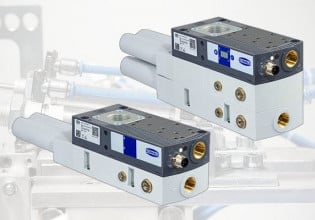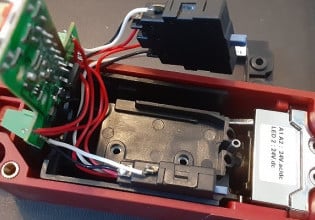A Look Into Automated Enterprise Resource Planning (ERP) Systems
Learn the different definitions of ERP Automation and how manufacturers may benefit from it.
Enterprise resource planning (ERP) may help businesses to organize, manage, and integrate many of its key processes, such as supply chain management, manufacturing, inventory management, and many more.
Whether client/server or cloud-based, an ERP system is designed around a philosophy of centralized data by making extensive use of central databases. This makes workflows more efficient and reduces instances of duplicate data.
Due to these features, the process of integrating an ERP system into a business for the first time is itself a form of automation. Beyond the advantages that an ERP application comes with, there are other features and functionalities that constitute ERP automation.
What is ERP Automation?
There are two schools of thought that apply when defining ERP automation. On the one hand, the approach looks at the different tools and dedicated applications that help improve and automate the more traditional business processes integrated into the ERP.

Fig. 1 A photo showing how engineers can utilize ERP automation in their facility. Image used courtesy of Siemens
On the other hand, a separate definition includes newer technologies and concepts, such as IoT, and how they can be applied to an ERP solution. The first definition is more of a natural continuation and evolution of ERP systems. The latter is more disruptive and forward-looking.
Robotic Process Automation in ERP Systems
ERP systems often come with many functionalities off the shelf. Upgrading a business to an ERP-driven workflow is, by nature, a type of automation. However, the reality is that even some of the most comprehensive ERP systems in the market, by default, rely extensively on “human interaction.” This could be manual data entry, scanned copies of documents and signatures, and manual report creation.

Fig. 2 Robotic Process Automation (RPA) plays a huge role in helping ERP Automation streamline processes. Image used courtesy of Universal Robots
That’s where Robotic Process Automation (RPA) comes into play. RPA is both a process and a technology. RPA makes use of automated agents or robots, called bots.
Not to be confused with physical robots in industrial automation, a bot is a software program designed to automate a task or process. Usually, these tasks are repetitive and tedious. When a bot is used, humans have more time to work on the tasks that only humans are capable of.
In the ERP world, there are many applications where robots have proven to be helpful. Below are some examples of these applications in different business processes.
Supply Chain Management
Bots are especially well suited for the SCM workflow. For companies that deal with a large number of vendors, it can be problematic and time-consuming to manage the supply chain without any sort of bot in place.
Examples of SCM tasks that can be automated with bots are invoicing, inventory levels, inbound and outbound deliveries management. A very popular use of bots in SCM is for inventory management, where alert systems or even automatic orders can be triggered upon hitting predetermined low stock levels of a specific part or material.
Automated Invoicing
This is beneficial to the financial area. When a bot is not used, there is typically large amounts of paperwork to manage. This is prone to typos and many other human errors resulting in processing delays and wasted human resources.
Using bots in the invoicing process reduces or eliminates the amount of data entry done by humans.
Automated Reporting
ERP reports are produced virtually in all areas of a company. This task is still nowadays done manually in many businesses. The process of exporting data from the ERP to then format it and evaluate it in a spreadsheet can be a full-time job for someone within a company department.

Many companies are realizing the need to optimize this and decide to invest in robots to automate report creation. This can be done with ERP automation software. Image used courtesy of Fetch Robotics
These bots can be very simple, or they can be more complex applications that give the customer the capability of creating new reports or customizing existing ones.
ERP Automation Through IoT
IoT is a technology concept that has incentivized many new devices capable of connecting to the internet. Sensors, machines, and automobiles are some examples of everyday hardware that is being revolutionized with IoT.
The ERP industry is not isolated from this. Several ERP vendors invest in R&D initiatives to integrate their systems with the outside world over the internet. Providing safe data security technologies, this growing trend is likely to be an important disruptor of how ERP data flows.
Epicor Software “Making sense of Industry 4.0 data through ERP”. Video used courtesy of Epicor Software
ERP applications will then be designed with the interconnectedness of the IoT interfaces as a priority. There will still be some traditional data management, but it will likely be a more standardized feature.
For example, with IoT integration, ERP systems can take orders directly from customers via an e-commerce interface, which can then be immediately transferred to an automated production line. These modern ERP systems may be an important element in the Industry 4.0 revolution.
ERP applications will then be designed with the interconnectedness of the IoT interfaces as a priority. There will still be some traditional data management, but it will likely be a more standardized feature.
For example, with IoT integration, ERP systems can take orders directly from customers via an e-commerce interface, which can then be immediately transferred to an automated production line. These modern ERP systems may be an important element in the Industry 4.0 revolution.






